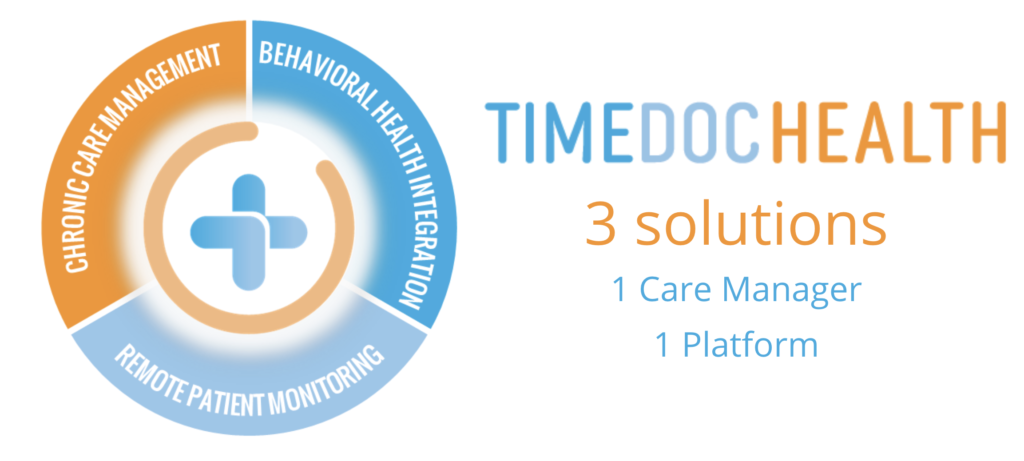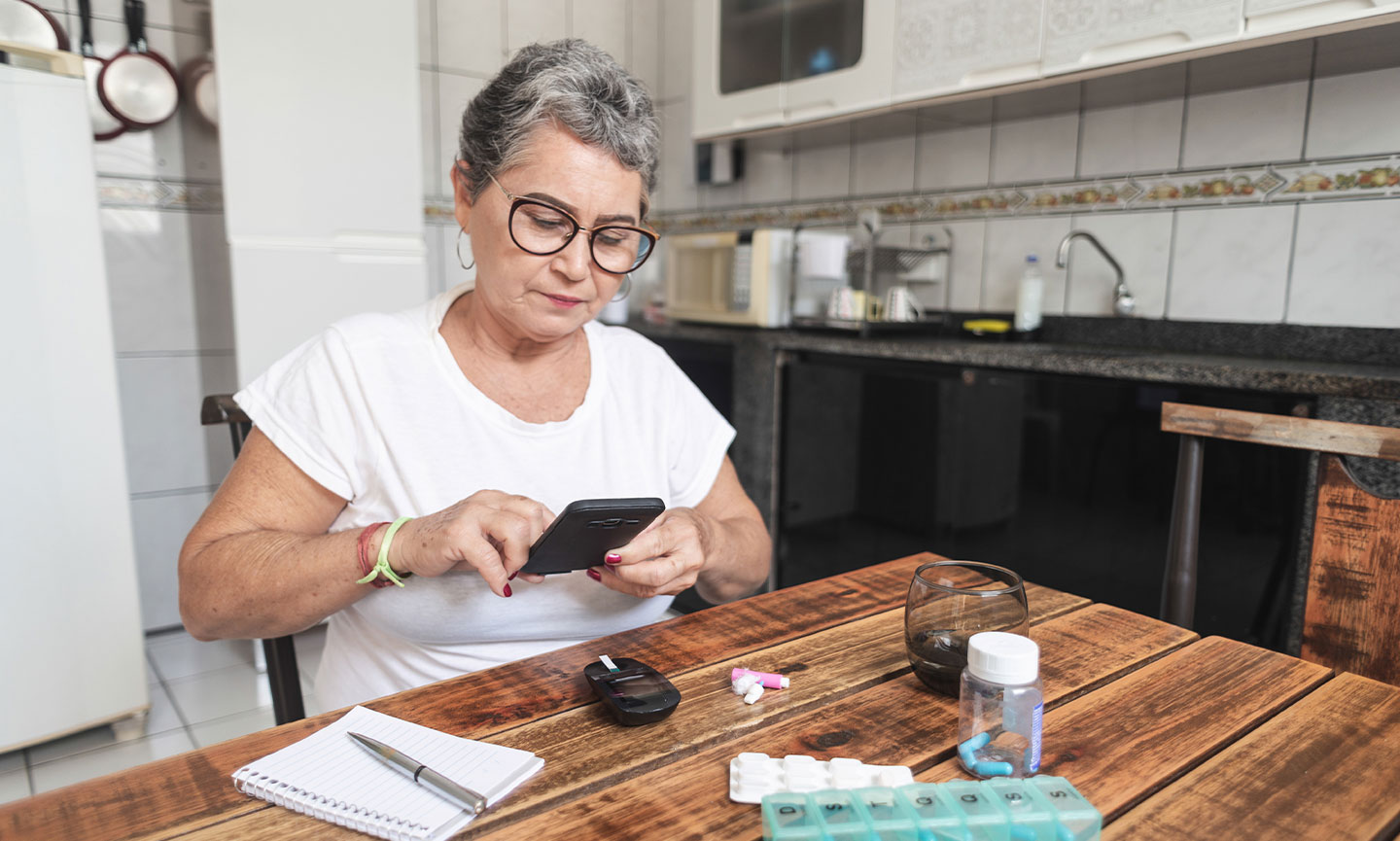The ongoing Covid-19 pandemic has changed the way we work, go to the grocery store, how we interact with our family and friends, how we use technology, and even how we go to the doctors’ office when we need care.
It is crystal clear that the world has changed since March 2020 by becoming increasingly more virtual. While many Medicare patients depended on virtual care before the pandemic, that metric has dramatically increased and will continue to grow in a post-pandemic world, paving the road for a new era of healthcare. According to CDC.gov.
During the first quarter of 2020, the number of telehealth visits increased by 50%, compared with the same period in 2019, with a 154% increase in visits noted in surveillance week 13 in 2020, compared with the same period in 2019. During January–March 2020, most encounters were from patients seeking care for conditions other than COVID-19.
Virtual Care Management (VCM), under the umbrella of telehealth, grew in popularity in 2020 as face-to-face visits had to be limited. Still, many independent practices and community health centers were ahead of the curve. For years, progressive health care organizations have been supporting the transition from in-person ambulatory care to virtual care delivery by offering services like chronic care management (CCM), behavioral health integration (BHI), and remote patient monitoring (RPM).
- Chronic Care Management (CCM)
- Chronic Care Management bridges the gap between face-to-face appointments to improve the health outcomes for patients with chronic conditions by addressing gaps in care.
- Behavioral Health Integration (BHI)
- Behavioral Health Integration uses validated rating scales to measure and track patient progress and helps bridge the gap between primary care and behavioral health.
- Remote Patient Monitoring (RPM)
- Remote patient monitoring uses asynchronous care by allowing patients to submit vital health metrics directly to their provider team outside of the healthcare setting.

Regardless of the patient’s needs, CCM, BHI, and RPM all have one primary goal in mind, improving the patient’s quality of life through meaningful care. Whether it is as simple as getting a prescription filled, rescheduling appointments, or checking in on how patients manage their symptoms, no patient is the same, and virtual care management programs can help patients in many different ways.
CCM Patient Story
Susan is a CCM patient, and when she answered her care call, she was out of breath and having a hard time breathing due to her chronic conditions. She told her care team that she was having difficulty breathing for a few days due to not getting her nebulizer medication from the pharmacy. The care manager was able to talk to the pharmacy and the provider directly to figure out why Susan was unable to get her medicine. An insurance billing problem. Susan’s care team was able to work it out with all parties, and Susan now has her medication.
BHI Patient Story
Alfred recently enrolled in his provider’s BHI program due to increased symptoms of depression and anxiety due to Covid-19. Before being a part of the BHI program, Alfred hasn’t left his house in nearly eight weeks and misses sitting in parks to help ease his anxiety; Alfred tried to schedule appointments to help cope with his symptoms with no luck, making him feel stuck. Luckily, he was able to speak with a care manager and get him set up with weekly virtual care appointments to help monitor his depression and anxiety, breaking the behavioral health spiral.
RPM Patient Story
Jill is an RPM patient and relies on public transportation, and while on the bus, she misplaced her test strips used to test her blood sugar. Jill was afraid insurance wouldn’t cover replacement strips, and without having access to the test strips, Jill stopped testing her blood sugar. When a care manager reached out to Jill, Jill communicated with the care team about her situation and got new strips to test her blood sugar again. Without a care team to check-in and help Jill, her condition could have worsened, leading to an emergency room visit. Jill knows that if she ever does not test her blood sugar for a prolonged amount of time, her care team will virtually check-in.
But, improved patient outcomes are only one of the many benefits to a successful virtual care program:
- Increased Health Equity
- Virtual care bridges the gaps in health equity that many Medicare patients face. Medicare covers programs like CCM, BHI, and RPM, and many Federally Qualified Health Centers (FQHC) offer these services to their patients to increase access to health care. Health equity is an issue that was brought to light during Covid-19 as many communities were increasingly affected by Covid and did not have equal access to healthcare. According to rwjf.org, “Health equity means that everyone has a fair and just opportunity to be as healthy as possible. This requires removing obstacles to health such as poverty, discrimination, and their consequences, including powerlessness and lack of access to good jobs with fair pay, quality education and housing, safe environments, and health care.” Virtual care and care management can help improve the patients’ lives that rely on Medicare and FQHCs to close the gap instead of just minding it, making healthcare more accessible to all.
- Cost-Effectiveness
- Virtual care management initiatives decrease service costs for the patient and provider and effectively reduce the overall cost of health services. A PubMed journal article found that “ [Virtual care] was found to be more cost-effective ($335 per patient/year) compared to routine care ($585 per patient/year) and on-site care ($1,166 per patient/year).”Virtual care can also eliminate the need for unnecessary emergency room visits and reducing the number of no-shows. A survey from March 2021, done at a primary care clinic in Columbus, Ohio, found fewer people were canceling virtual care appointments. Only 14 out of 186 scheduled patients canceled their virtual appointment. In comparison, 56 out of 155 patients canceled their in-person visits.
- Improves Patient Satisfaction
- Virtual care allows providers to build better relationships with patients, leading to better outcomes and improved health. This type of care adds convenience for elderly patients as appointment scheduling, care follow-up, and care coordination occur using telephonic engagement. Virtual care allows patients to build better relationships with their care management teams, building better relationships with the care team, in turn, leading to better health outcomes and improved satisfaction across the board. By large, virtual care can be utilized to fill in low-acuity health gaps, “Forty-one percent used telehealth for a wellness visit and 30 percent for chronic disease management,” according to patientengagementhit.com. Additionally, patients fifty percent said they would be willing to switch healthcare providers if it meant they would continue accessing virtual care regularly.
- Continuity of Care
- Continuity of care can be best defined as “An approach to ensure that the patient-centered care team is cooperatively involved in ongoing healthcare management toward a shared goal of high-quality medical care. Continuity of care promotes patient safety and assures the quality of care over time.” This ongoing process allows for the network of providers to be interconnected through a care management team. A care manager gets to know a patient well by knowing all their conditions and being in contact with providers throughout this process; the care manager is tasked to virtually look over the patient. Continuity of care connects all the dots of virtual care, with the care manager sharing the same values as the patient, which include prioritizing high-quality care, improving/managing conditions, and promoting cost-effective care. Continuity of care improves safety and quality of care over time through a meaningful relationship with the patient and care manager.
Virtual care has been utilized well before the Covid-19 pandemic; providers have been trying new methods to ensure virtual care is just as effective as an in-person visit by maintaining standards of quality and effectiveness. Organizations now use services like CCM, BHI, and RPM as a standard of care.
As the healthcare landscape continues to shift to a blended model of in-person and non-face-to-face care delivery, providing meaningful care that enhances the patient experience is the most critical component in improving patient outcomes.
References:
https://www.cdc.gov/mmwr/volumes/69/wr/mm6943a3.htm#:~:text=During%20the%20first%20quarter%20of,the%20same%20period%20in%202019.
https://www.medicaleconomics.com/view/why-patient-experience-matters-more-ever
https://www.rwjf.org/en/library/research/2017/05/what-is-health-equity-.html
https://pubmed.ncbi.nlm.nih.gov/12419022/#:~:text=Average%20and%20incremental%20cost%2Deffectiveness,1%2C166%20per%20patient%2Fyear).
https://www.liebertpub.com/doi/full/10.1089/tmj.2021.0002
https://pubmed.ncbi.nlm.nih.gov/26269131/
https://patientengagementhit.com/news/telehealth-patient-satisfaction-high-paves-path-for-future-access
https://www.ahrq.gov/cahps/about-cahps/patient-experience/index.html
https://www.aafp.org/about/policies/all/continuity-of-care-definition.html
https://health.ri.gov/healthcare/about/continuity/
https://www.hrsa.gov/opa/eligibility-and-registration/health-centers/fqhc/index.html

